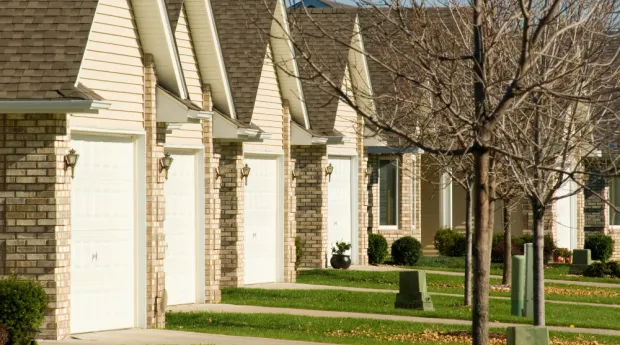Xcel Energy is requesting to increase rates for electric service for the fourth and fifth years in a row. Xcel’s ask would add nearly $574 million to customers’ tabs over the next two years, and $365.3 million each year following 2026.
If the request is approved as is, the typical customer's bill will go up by $10.27 per month, or $123.37 per year.
Meanwhile, many Xcel customers are having difficulty affording their energy bills. We can see it in Xcel’s shutoff numbers: In 2024 alone, the company disconnected service to more than 52,000 households. That’s more than triple the number of households shut off in 2019, and far more than any year in the past decade. Xcel is on track to match or exceed that number in 2025. Clearly, any rate increase will be difficult for many Xcel customers.
As the cost of living rises dramatically, and federal actions are expected to send energy bills even higher, Xcel’s requested increase will be difficult for many households.
Any increase must be approved by the Minnesota Public Utilities Commission. If you're concerned about Xcel's request to increase rates for electric service, submit a comment in Docket 24-320 today.
Not sure if Xcel provides your electricity? Take a look at this map.
*Updated November 12, 2025 to reflect changes to Xcel Energy's proposal.
Xcel's Rate Increase by the Numbers
The Rate Case Process
When an investor-owned utility, like Xcel, wants to increase rates, it needs approval from its regulator: the Minnesota Public Utilities Commission (PUC). Here’s an outline of the procedure in this case. The PUC also has a helpful explainer on their website.
November 1, 2024: Xcel filed a formal request to increase rates with the PUC, initiating a “rate case” proceeding. This proceeding is overseen by an administrative law judge. Parties like CUB formally intervene, giving them the opportunity to submit expert witness testimony and legal briefs. Members of the public can also submit comments expressing their opinions.
September 15-25, 2025: Public hearings held, an opportunity for members of the public to voice their opinion on the requested increase.
December 30, 2025: Deadline to submit written public comments.
February 25, 2026: Intervening parties file their final legal briefs in the case.
April 30, 2026: Administrative law judge issues his findings and recommendation to the PUC.
June-July 2026: PUC holds a hearing to make a final determination on the requested increase. The PUC will issue an order by July 31, 2026.
What are interim rates?
Under state law, utilities are permitted to raise rates on an interim, or temporary, basis while their rate case is being reviewed by the PUC. Late last year, the PUC approved an interim rate increase for Xcel of 5.2 percent, or $192 million. The typical residential customer has seen their bill go up a little more than $5 a month.
The interim rate is calculated as a ~7% increase on the base rate charges on your bill: basic service charge, demand charges, and energy charges. The interim rate charge is listed on Xcel electric bills as "Interim Rate Adj."
This interim rate will remain in effect till Xcel's request to increase rates is settled. If the final rate increase approved by the PUC is lower than the interim rate increase, then Xcel must refund the difference to customers, with interest. If final rates are higher than interim rates, Xcel won't be able to recover the difference from customers.
Why does Xcel want to increase electric rates?
Infrastructure and Inflation
Utility infrastructure requires maintenance. Aging power generation plants need to be upgraded or replaced, and additional generation is needed to meet increasing demand, particularly from data centers. Xcel is making investments to meet Minnesota’s 100% carbon-free standard. Fortunately, renewable energy is often the most cost-effective option—but it still comes with a cost, which must be paid for by ratepayers. Additionally, inflation has increased the cost of doing business.
Return on Equity
Over a quarter of Xcel’s total request (approximately $100 million annually) is due to a requested increase in the company's authorized return. Investor-owned utilities are owned by shareholders. In Minnesota, and many other states, utilities are granted a monopoly service territory. This makes sense to take advantage of economies of scale, and because no one wants multiple power lines running down their street. Monopoly utilities are required to provide reliable service in compliance with state law. In exchange, they are allowed to earn a fair return for their shareholders. The PUC is tasked with making sure that return is reasonable and balanced with the public’s need for affordable electricity.
What is CUB asking for?
Xcel’s request to raise rates comes as many customers are already having difficulty affording their energy bills. Nearly 190,000 households have fallen behind on their Xcel bills, and the average past-due household now owes about $500—more than twice the average balance in 2019. On top of that, Xcel is shutting off more customers than ever before. More than 52,000 households had their Xcel service shut off for nonpayment last year.
Even as their customers fall farther behind, Xcel has been steadily raising rates. 2026 will mark the fifth year of consecutive electric rate increases.
Past-due balances grew during the COVID-19 pandemic, while many people faced lost wages and higher prices due to supply chain issues and inflation for household necessities. Inflation has persisted since 2020, and housing costs continue to grow, putting increased strain on household budgets.
Federal changes could push rates up further. The Trump Administration’s “One Big Beautiful Bill” is projected to substantially increase Minnesota’s electric rates, and the elimination of home energy tax credits will make efficiency improvements more expensive. The Administration is also canceling hundreds of millions in energy grants and keeping unneeded coal plants online, the costs of which will fall to ratepayers. Efforts to cancel new transmission lines likewise threaten to increase energy costs. And President Trump has called for an end to the Energy Assistance program, a lifeline for thousands of Minnesota families each winter.
The bottom line: Xcel customers are facing substantial affordability challenges which are likely to be exacerbated in coming years. In this context, the PUC must be especially careful not to allow Xcel to raise rates more than necessary. While some rate increase may be unavoidable, any rate increase is going to be difficult for many Minnesotans.
Xcel customers who have been disconnected for nonpayment are charged reconnection fees when their service is turned back on. And Xcel charges late fees on customers’ past-due balances. CUB recommends that both of these fees be eliminated.
Reconnection fees
Xcel’s reconnection fees are currently $13.50 for customers with smart meters, which can be reconnected remotely, and $50 (increasing to $95 on January 1, 2026) for customers who have opted not to have a smart meter installed. For households that already lack the money to keep up with their power bills, these fees are significant. Considered across Xcel’s entire customer base, however, the fees barely register.
Xcel estimates it will collect $485,000 in reconnection fees each year. To waive these fees, and instead have the cost covered by all ratepayers, will cost about $0.03 per month for the typical residential customer. Reconnection fees can be a real hardship for households who are already past-due and have had their power shut off, but the cost is miniscule when shared among all customers.
Late fees
Xcel applies a 1.5% per month fee to residential customers’ past due balances. This amounts to 18% per year—equivalent to the interest rate on some credit cards. This fee is unreasonably high. Some Xcel customers have racked up thousands of dollars in late fee charges. These fees put customers much farther behind, add millions of dollars each year to customers’ arrears, and penalize customers who are already unable to pay their electricity costs.
Xcel charges past-due customers far more than its actual cost of interest, with the idea that late fees are a penalty that motivate people to pay their bills on time. But there is no evidence that actually works. In fact, the Kentucky Public Service Commission (that state’s utility regulator) concluded that late fees actually hamper customers’ ability to make timely payments by making the payments unaffordable.
CUB recommends that the PUC follow the example of states like Massachusetts and New Jersey and eliminate Xcel’s late fees.
Investor-owned utilities like Xcel are entitled to an opportunity to earn a reasonable financial return. This “return on equity” (ROE) is applied to infrastructure investments the utility makes. Very simply, the higher the authorized ROE, the more customers pay, and the more utility shareholders profit. Determining a fair ROE is a major part of the PUC’s determination every time a utility requests a rate increase.
Xcel's currently has an authorized ROE of 9.25%. This 9.25% return is included in the base rates that Xcel charges to customers. In the current case, Xcel is requesting an increase to a 10.3% ROE—higher than any other Minnesota utility.
According to a financial analysis conducted for CUB, Xcel's requested ROE would add about $100 million per year to customers’ bills. This increase would add to the nearly $2 billion in profit Xcel’s parent company made last year.
This is unreasonable—especially considering the affordability challenges customers are already facing. Xcel’s ROE must come down substantially over time in order to fairly balance the interests of investors with affordability for ratepayers.
CUB is recommending that Xcel’s ROE be set at 9.0% in this rate case, creating ratepayer savings of about $24 million each year.
What's going on with Xcel?
Alongside the ongoing rate case, Xcel has some other issues going on. Read more about CUB's advocacy for Xcel ratepayers.
More about Xcel's requested rate increase

How will Xcel’s electric rate increase impact Minnesotans?
Housing, groceries, insurance, and medicine are getting more and more expensive, and all signs point to it getting worse in the months ahead. Utilities like electricity and natural gas aren’t an exception. Throughout this article, you'll find quotes from everyday Minnesotans who will be impacted by higher Xcel electric bills. Over 7000 public comments have been submitted to the PUC in Docket 24-320.

How much should Xcel customers pay to compensate the company's top executives?
Seperate from Xcel's current request to increase electric rates, the PUC is still making some final decisions about Xcel’s last electric rate increase that went into effect in 2023. One primary issue remaining from the last rate case is how much money Xcel customers are required to pay toward compensation for Xcel’s top ten highest paid executives.

Xcel proposal could reduce refund owed to customers
Since January, Xcel customers have been charged an interim rate increase of 5.2%, or about $5 per month for the typical residential customer. Last month, Xcel submitted a proposal to the PUC that upends the typical process for establishing interim rates and determining how any customer refunds are calculated after final rates are set. The company’s proposal would reduce the refund it may eventually owe customers—a result clearly inconsistent with Minnesota Law.

Minnesotans are struggling with utility costs while executives are paid millions
Over the course of 2024, regulated utilities disconnected over 91,000 Minnesota households from utility service. Utility executives, in contrast, were paid millions. In 2024, Xcel's CEO was paid $12.9 million in 2024, or 99 times more than the company’s median employee.

Xcel seeks rate increase despite growing profits
On February 6, 2025, Xcel released its annual earnings report for 2024. In it, the company reported $1.94 billion in annual profits—or $3.44 in earnings per share of outstanding Xcel stock— for 2024. A review of similar reports for prior years reveals that Xcel’s profits have climbed in at least each of the past five years.

CUB fights Xcel’s request to raise electric rates… again
CUB's first article following Xcel's initial request to increase rates for electricity service.





